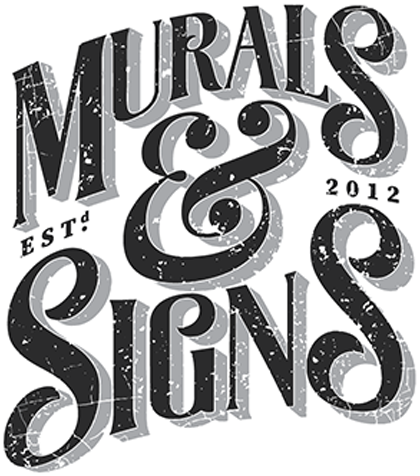Introduction
Determining the pricing for commercial mural painting involves careful consideration of various factors that impact the overall cost. Unlike traditional art, mural painting encompasses unique elements that contribute to pricing complexities. This article delves into the essential factors that affect the pricing of commercial mural painting. From project size and design complexity to surface type and location, we’ll explore the intricacies of pricing strategy to help artists and businesses create accurate and competitive estimates that reflect the value of their work.
Project Size and Scope
Dimensions of the Mural
The size of the mural is a significant factor in pricing. Measure the mural’s dimensions accurately, including height and width. Larger murals require more time, materials, and effort, resulting in a higher overall cost.
Wall Coverage
Consider the portion of the wall that the mural will cover. Full-wall murals will generally be priced differently from partial or corner murals. The extent of coverage influences the complexity of the project and subsequently affects pricing.
Design Complexity
Intricacy of Design
The complexity of the design plays a crucial role in pricing. Elaborate and detailed designs that involve intricate patterns, textures, and multiple elements demand more time and skill, leading to a higher cost.
Customization and Details
Designs that require customization or incorporate specific client requests may warrant an additional cost. Custom elements, such as logos or personal touches, contribute to the uniqueness of the project and influence pricing.
Surface Type and Preparation
Surface Texture
The texture of the surface affects the ease of painting and the materials required. Smoother surfaces may require less preparation and yield smoother painting, while rougher textures may demand additional effort and resources.
Surface Preparation
Evaluate the condition of the surface before painting. If surface preparation is needed, such as cleaning, priming, or repairing, these tasks should be factored into the pricing. Preparation work adds time and materials.
Location and Accessibility
Indoor vs. Outdoor
The location of the mural impacts pricing. Outdoor murals may require additional protective coatings to withstand weather conditions, while indoor murals might focus more on aesthetics. Location influences material choices and durability.
Accessibility
Consider the accessibility of the mural site. If the site is challenging to reach or requires special equipment like scaffolding, these factors influence the overall cost due to the extra time and resources involved.
Material Costs
Paint Quality
The quality of paints used affects both the appearance and longevity of the mural. Higher-quality paints may come at a higher cost but contribute to the overall value of the artwork. Consider the brand, type, and durability of the paints.
Additional Materials
Other materials such as brushes, rollers, sprayers, and protective coatings contribute to material costs. These expenses should be accurately calculated and included in the pricing to reflect the comprehensive materials needed.
Time and Labor
Design Phase
Account for the time spent on the initial design phase. This includes sketching, revisions, and client consultations. The design phase is crucial for establishing the project’s direction and should be factored into pricing.
Execution and Painting
Estimate the time needed for the actual painting process. The complexity of the design, surface type, and mural size all influence the time required for execution. Accurate estimation ensures fair compensation for the artist’s labor.
Touch-ups and Corrections
Allocate time for potential touch-ups and corrections after the mural is completed. These adjustments are common in creative projects and should be accounted for to maintain the quality of the final product.
Artist’s Experience and Expertise
Skill Level
An artist’s skill level and experience directly impact pricing. Seasoned artists with a proven track record may command higher rates due to their expertise, while emerging artists might price their work more competitively.
Portfolio and Reputation
An artist’s portfolio and reputation in the industry contribute to pricing. A strong portfolio showcasing previous work and positive reviews can justify higher rates, as clients are willing to invest in quality and expertise.
Market Demand and Competition
Supply and Demand
Market demand for mural painting services influences pricing. In areas with high demand and limited supply of experienced mural artists, pricing may be higher. Conversely, in less competitive markets, pricing might be more flexible.
Competitive Analysis
Research what other mural artists are charging for similar projects in your region. Analyze the pricing landscape to ensure your rates are competitive while reflecting the value you bring to your work.
Client Budget and Expectations
Budget Constraints
Consider your potential clients’ budget limitations. While pricing should reflect the value of your work, offering flexible options or tiered packages can accommodate a range of client budgets.
Value Perception
Pricing should align with the value perceived by clients. Clearly communicate the benefits of your work, your expertise, and the impact of the mural. This alignment justifies your pricing and fosters trust with clients.
Conclusion
The pricing of commercial mural painting is influenced by a multitude of factors that encompass project scope, design complexity, surface type, location, materials, labor, artist expertise, market dynamics, and client expectations. By understanding and carefully considering these factors, artists and businesses can develop pricing strategies that accurately reflect the value of their work, maintain competitiveness, and ultimately lead to successful and mutually satisfying projects.
Comparing hourly rates vs. fixed pricing for commercial murals
